Almost every day, I walk past the Fralin Museum of Art at the University of Virginia. The museum is not large but I have seen many remarkable exhibits there, including an eye-opening show on pictorialist photography (reviewed here); an ambitious show chronicling six centuries of printmaking (reviewed here); a terrific show on the skyscraper in art (reviewed here); and an exceptional selection of the work of Joseph Cornell (reviewed here).
Gracing the exterior of the museum is Jean Arp’s delightful Oriforme (1962), a stainless steel sculpture in the biomorphic style. The sculpture has been on loan to the Fralin from the National Gallery of Art in Washington, DC, and recently it was called home to become part of the NGA’s sculpture collection. Earlier in the month, I joined a group of spectators watching a crew lift the wrapped sculpture by telescoping crane up over the tree line and on to the bed of a transport truck. It was a bittersweet moment. Arp’s Oriforme is a compact and accomplished work, beautifully designed and machined, and its siting in front of the Fralin was inspired. The rapport between the building with its classical façade and the flowing, organic shape of the sculpture was a fine example of what happens when architecture and public art work well together. (I can’t resist adding that my hometown of Houston has one of the most extraordinary collections of public art to be seen in any American city.)
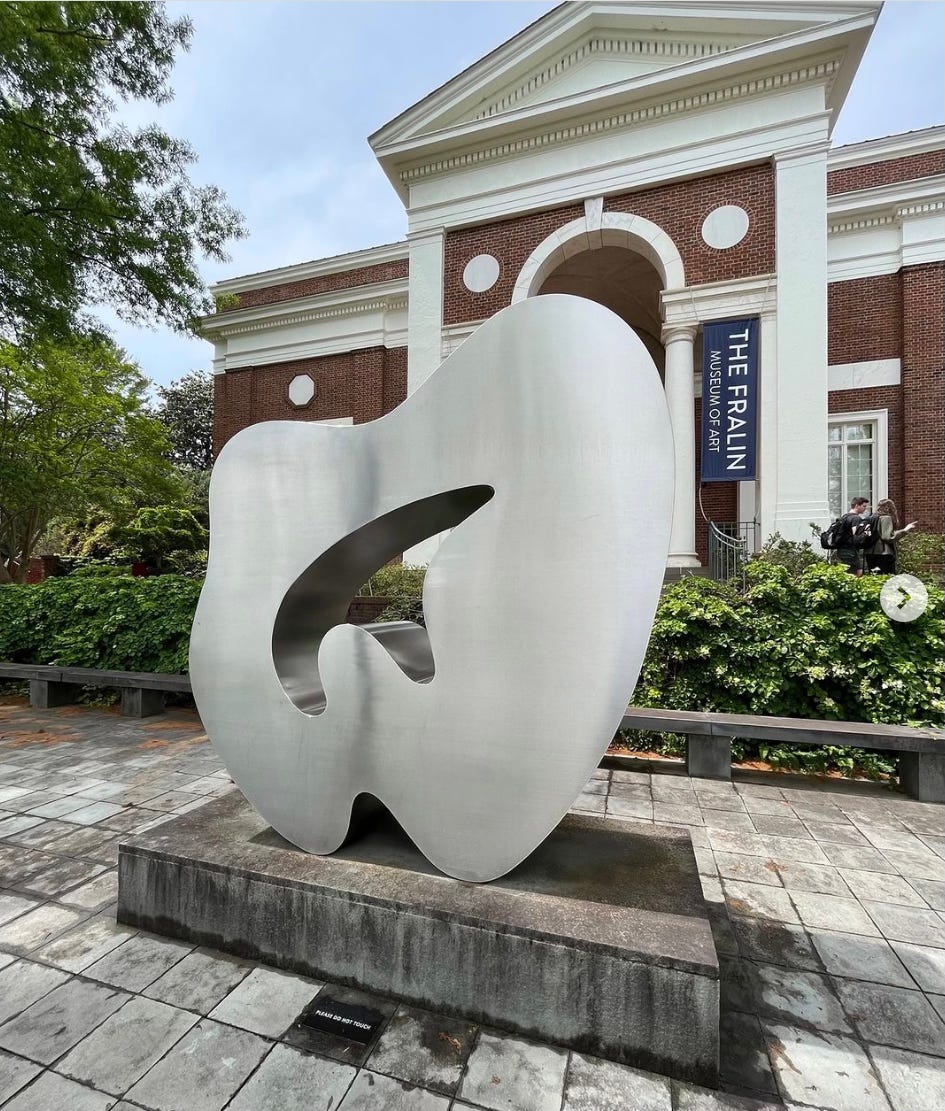
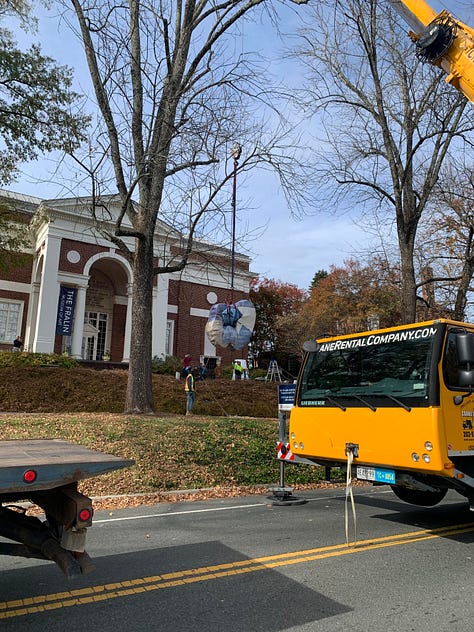

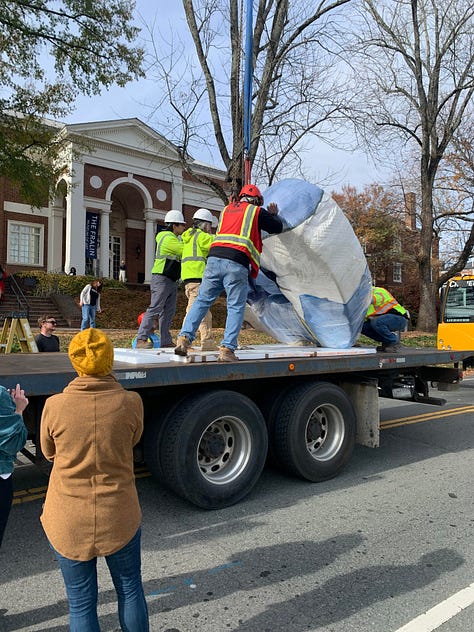
The Greek word biomorphic is composed of “bio” meaning life and “morphe” meaning form. Biomorphic art is meant to evoke natural shapes found in plants or the human body. The sculpture of Henry Moore and Barbara Hepworth as well as the paintings of Joan Miró are well known examples. Another such was German-French artist Hans Peter Wilhelm Arp, or Jean Arp, (1886–1966), a sculptor, painter, and poet who was active in the Surrealist and Dada movements, of which biomorphism is one expression. The effects of psychoanalysis were especially formative in early twentieth century avant-garde movements such as Surrealism and Dada in which the creative impulse was supposed to spring out of the unconscious unmediated by tradition, training, or expertise. This free association, or automatism, energized much of the art produced by the Surrealists and Dadaists in the 1920s and 1930s; later artists such as Jackson Pollock brought the ideas behind automatism into abstract art. In his Manifesto of Surrealism (1924), founder André Breton wrote “Pure psychic automatism [emerges from] the dictation of thought in the absence of all control exercised by reason and outside all moral or aesthetic concerns.”
It is easy to imagine Jean Arp sketching out Oriforme without much planning or forethought, just dashing off an organic—and pleasing—shape. Later, when artisans took his sketch and created a three-dimensional version, Oriforme took on, well, a completely new form. The inevitable changes that occur when a two-dimensional sketch is rendered in three dimensions is one of sculpture’s most compelling aspects. What is flat on paper becomes something that has sides, a top, a bottom, an inside, and an outside. The fact that Oriforme, as with many Arp sculptures, has an inner cutout adds to its sense of movement. The cutout increases the sculpture’s sense of play and illusion of lightness. What’s more, the inner cutout has a life of its own; it does not merely duplicate the overall contours of the sculpture but achieves its own three-dimensional presence. Some months ago, I watched a curator clean Oriforme, wiping and rinsing the metal with care. I didn’t suspect at the time that this may have been in preparation for the move.

The biomorphic style found its most dedicated practitioner in British artist Henry Moore (1898–1986) whose works uncovered dynamic new ways to express the human form. Moore began sculpting in the 1920s and made some remarkable drawings of people sheltering in the London Underground during the Blitz. Moore’s sculpture is typically monumental in scale and it is marvelous in outdoor settings. I always thought his reclining figures looked like the Chacmool figure found in Mayan and Aztec art; as it happens, according to the Henry Moore Foundation, Moore “described the Chacmool as one of the most significant influences on his early work, commenting that it was not only the reclining pose of the figure but its sense of weight and massiveness that appealed to him.” Moore is said to have seen a plaster cast of a Chacmool figure in the 1920s at the Trocadero Museum in Paris. The photograph below shows Moore’s Reclining Figure (very chacmool-like) from the 1950s with its sinuous curves and dynamic surfaces set off nicely by the prim Georgian building behind it.

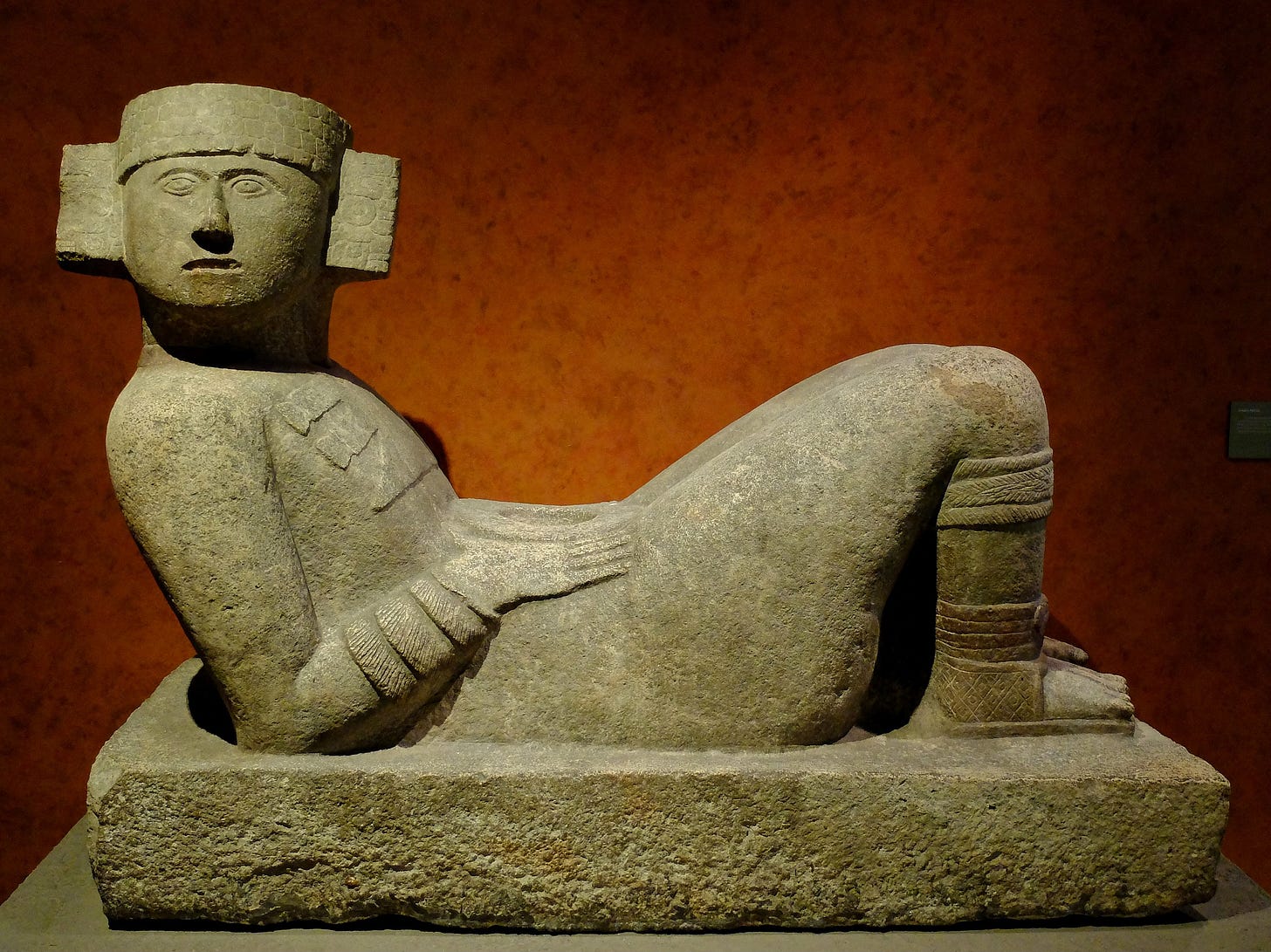
Russian-American artist Ilya Bolotowsky (1907–1981) fled St. Petersburg after World War I and the Russian Revolution due to his family’s anti-Communist sentiments. Eventually, Bolotowsky made it to New York. During his life, he mastered virtually every aspect of modern art from Soviet realism to constructivism to hard-edged abstraction (Piet Mondrian was a huge influence) and biomorphism. In some works such as his WPA mural for a Williamsburg (New York) housing project, Bolotowsky melded constructivist ideas with biomorphic shapes in a lively and striking composition that works far better than you might think it should.

American artist and author Charles Green Shaw (1892–1974) led a charmed life. Although he lost his parents when he was a boy, he was raised in society circles, meeting everyone who was anyone and enjoying the benefits of being a Woolworth heir. He studied art with American painters Thomas Hart Benton and George Luks and found inspiration in visits to the Paris studios of Pablo Picasso, Georges Braque, and Fernand Léger. As one of the Park Avenue Cubists, Shaw often defended American abstract art as distinct from the prevailing and long-reaching influence of European abstractionists. Shaw’s biomorphic study below and later constructions in wood were much influenced by Jean Arp proving that perhaps it was not quite so easy to extricate American abstraction from the examples of its forerunners across the pond.
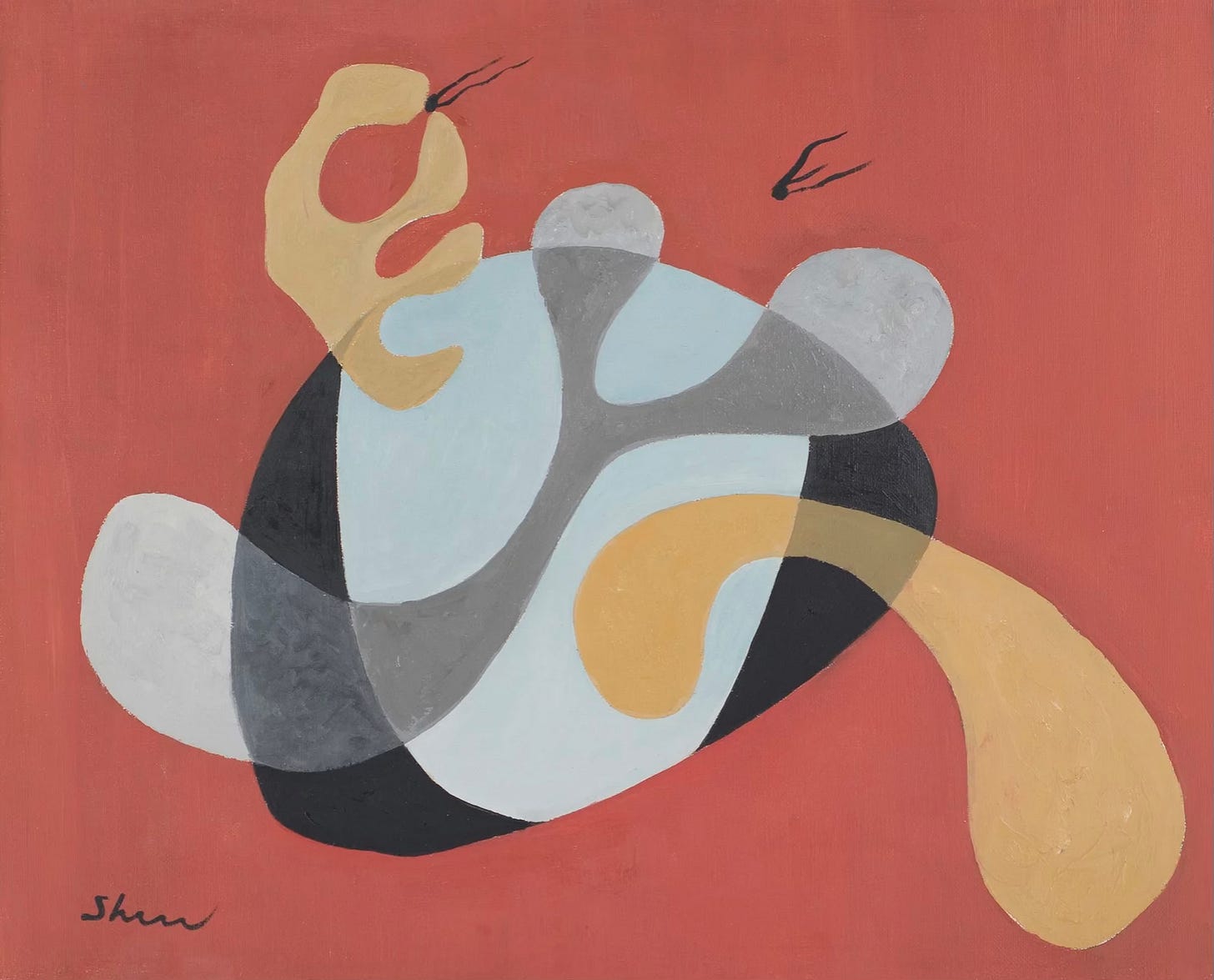
Biomorphism, like much avant-garde art, had as one of its aims “the destruction of coherence,” in the words of theorist Peter Bürger. Meaning was to be blasted out of existence in art so that it could not shape or influence interpretation. Art that is based on organic shapes such as those found in nature—including the human body—suggests a return of coherence, even if one isn’t quite sure what is being represented. For example, while I watched the workmen lift the Arp sculpture into the air, a group of college students walked by and said, “Look, they’re moving The Tooth!” It had never occurred to me to see Oriforme as a tooth and my mind refuses to admit that association. But what happens in biomorphic art, to a greater degree perhaps than with abstract art, is that it triggers cognition and recognition more readily. The organic shapes of biomorphism align with familiar shapes stored in our memories—rocks, leaves, faces, amoebas—and we see and recognize those in art. I associate Moore reclining figures with Chacmool figures because I knew about latter before I knew about Moore’s art. Now, I have a benchmark for Moore’s stylistic qualities that I can easily draw out of my memory—and I make a somewhat unlikely connection to ninth century Meso-America in the process.
I still don’t see a tooth in Arp’s Oriforme.
Parting Words: Wendell Berry on literacy
What American essayist Wendell Berry has to say here about the long perspective of literacy is especially meaningful in an age where AI threatens to take over every aspect of reading, writing, and learning.
I am saying then, that literacy—the mastery of language and the knowledge of books—is not an ornament, but a necessity. It is impractical only by the standards of quick profit and easy power. Longer perspective will show that it alone can preserve in us the possibility of an accurate judgment of ourselves and the possibilities of correction and renewal. Without it, we are adrift in the present, in the wreckage of yesterday, in the nightmare of tomorrow.




